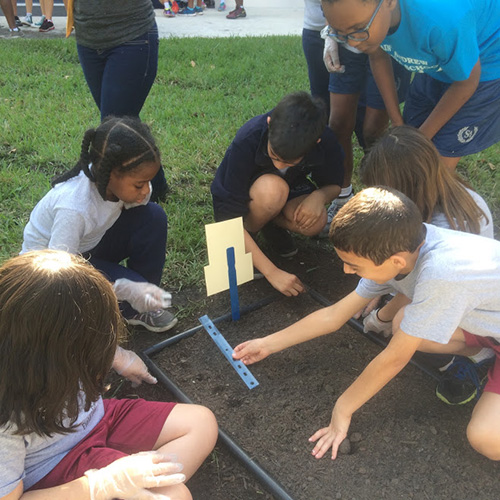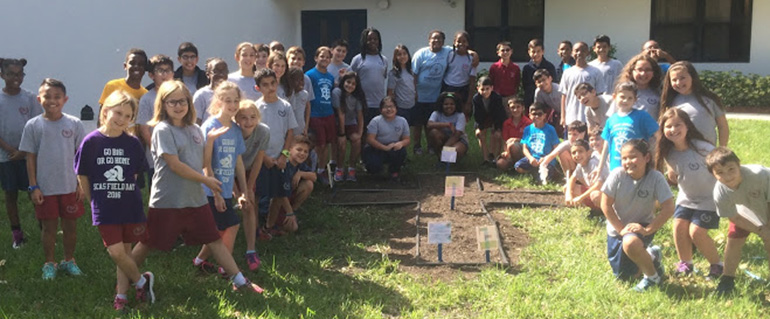By Florida Catholic staff - Florida Catholic

Photographer: COURTESY PHOTO
Divided into groups according to the specific plant they were assigned, fourth- and fifth-graders at St. Andrew School measure the distance between the holes where they will plant their seeds.
CORAL SPRINGS | When astronauts travel far, far from earth, how will they feed themselves? The fourth and fifth grade classes at St. Andrew School may be helping to find an answer.
The students are participating in a Fairchild Tropical Botanic Gardens challenge called Growing Beyond Earth, which is funded by a $1.24 million grant from NASA. The challenge consists of planting six different edible seeds in the school garden: dill, parsley Lisette, Chinese cabbage, Dragoon lettuce, Dwarf Grey sugar peas and romaine red lettuce. These seeds are all under consideration by NASA researchers for planting in space. The goal is to provide scientists information about which edible plants grown in the school garden can be used to sustain astronauts during longterm space voyages.
To carry out the challenge, both classes were divided into several groups according to the specific plant they were assigned. Prior to planting, each group was involved in the planning, designing, and implementation of the garden. Each student records the process and progression of the garden in a journal. The journal contains the research the students did on the plants they were assigned, a variety of designs that outline the garden’s layout, and reflections on data from their daily observations.
On planting day, each group was called according to their assigned plant. Each child in the group took turns measuring that the holes were 4 inches apart, planting three seeds in each hole, covering the seeds, and watering them carefully.
The rest is up to Mother Nature, under the careful observation of St. Andrew's students.

Photographer: COURTESY PHOTO
Fourth- and fifth-graders at St. Andrew School stand next to their experimental garden, where they are growing plants that could be grown in space, in order to feed astronauts on longterm space voyages.

